Unveiling Hetian Jade Market: A Treasure Trove for Gem Enthusiasts
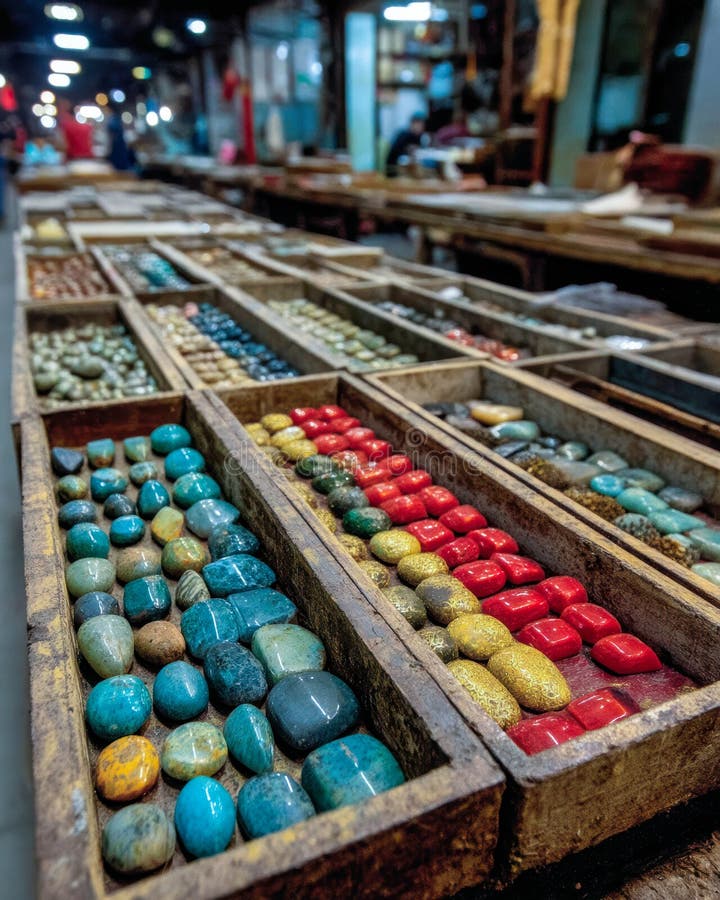
An Essential Guide to Visiting Hetian Jade Market
Nestled in the heart of Xinjiang Province, the Hetian Jade Market is a treasure trove for those captivated by the elegance and history of jade. With a legacy that spans nearly 8,000 years, Hetian jade holds a revered place in Chinese culture, embodying beauty, spirituality, and artistry. As you step into this vibrant market, you are not merely entering a shopping destination; you are immersing yourself in centuries of tradition and craftsmanship.
The Hetian Jade Market offers a unique opportunity to witness artisans skillfully carving exquisite pieces from this precious stone, often referred to as “mutton-fat jade” for its creamy, luminous appearance. The market is alive with the sounds of vendors extolling the virtues of their wares, each piece telling its own story of origin and artistry. Whether you are a seasoned collector or a curious traveler, the allure of Hetian jade is undeniable, drawing you into a world where beauty is both tangible and transcendent.
Beyond the dazzling array of jade jewelry, sculptures, and decorative items, the market serves as a cultural hub, showcasing the rich heritage of jade craftsmanship that has been passed down through generations. Here, you can engage with local artisans, learn about the different varieties and qualities of Hetian jade, and perhaps even discover the perfect piece to take home as a memento of your journey.
Join us as we explore the intricacies of the Hetian Jade Market, where every corner reveals a new facet of this cherished gem, inviting you to delve deeper into the art and history of jade in China.
In This Guide
- An Essential Guide to Visiting Hetian Jade Market
- The Rich History and Legends of Hetian Jade Market
- Main Highlights: What You Absolutely Can’t Miss
- Planning Your Visit: A Practical Guide
- Tickets: Prices, Booking, and Tips
- How to Get There: A Complete Transportation Guide
- Local Cuisine and Accommodation Nearby
- Frequently Asked Questions
- Final Thoughts on Your Trip
The Rich History and Legends of Hetian Jade Market
In the heart of Xinjiang Province lies the Hetian Jade Market, a vibrant hub steeped in a rich tapestry of history and legend. For over 8,000 years, jade has held a revered place in Chinese culture, symbolizing virtue, beauty, and power. Among the myriad forms of jade, Hetian jade, known for its exquisite quality and ethereal beauty, stands out as the embodiment of these virtues, earning it the title of “Imperial Jade.”
The roots of Hetian jade can be traced back to ancient times, with the earliest written records appearing in the works of the historian Sima Qian during the Western Han Dynasty. His accounts spoke of the vast resources found in Khotan, the historical name for Hetian, where jade flowed like water from the mountains, captivating the hearts of emperors and commoners alike. The region is rich in folklore, with tales of gods and ancient warriors intertwined with the stone, elevating its status to something almost divine.
As centuries passed, the allure of Hetian jade only grew stronger. The Qing Dynasty marked a significant turning point, as Emperor Qianlong’s fascination with the stone led to organized mining efforts, ensuring that the finest pieces adorned the imperial palaces. From that time onward, Hetian jade became synonymous with luxury and refinement, its beauty captured in intricate carvings that showcased exceptional craftsmanship.
The jade market itself evolved alongside these historical currents, transforming into a bustling center for trade and artistry. Today, visitors to the Hetian Jade Market can witness the fruits of this long-standing tradition firsthand. As you wander through the market’s vibrant stalls, the air is filled with the soft clinks of jade pieces and the warm chatter of artisans showcasing their work. Each piece tells a story, whether it’s a delicate pendant or a robust sculpture, embodying the spirit of the land from which it originates.
What makes Hetian jade particularly unique is its mineral composition, primarily composed of tremolite and actinolite. The best quality is often referred to as “mutton-fat jade,” characterized by its creamy white hue and subtle luster, reminiscent of fine silk. This type of jade has become a coveted treasure, with certain pieces fetching astronomical prices at auctions due to their rarity and exquisite quality.
Legends surrounding Hetian jade add to its mystique. One popular tale speaks of a celestial maiden who descended from the heavens, her beauty mirrored in the jade itself. It is said that the jade is imbued with the essence of the earth, carrying the wisdom of the ages. Another story recounts how jade was regarded as a protective talisman, warding off evil spirits and bringing good fortune to its possessor.
As you explore the Hetian Jade Market, you are not just engaging in a shopping experience; you are stepping into a world where history and myth converge. Each piece of jade represents generations of artistry, tradition, and culture, inviting you to become a part of its legacy. Whether you are a collector, a casual shopper, or simply a curious traveler, the Hetian Jade Market offers a glimpse into a world where beauty is eternal and history is etched in every stone.
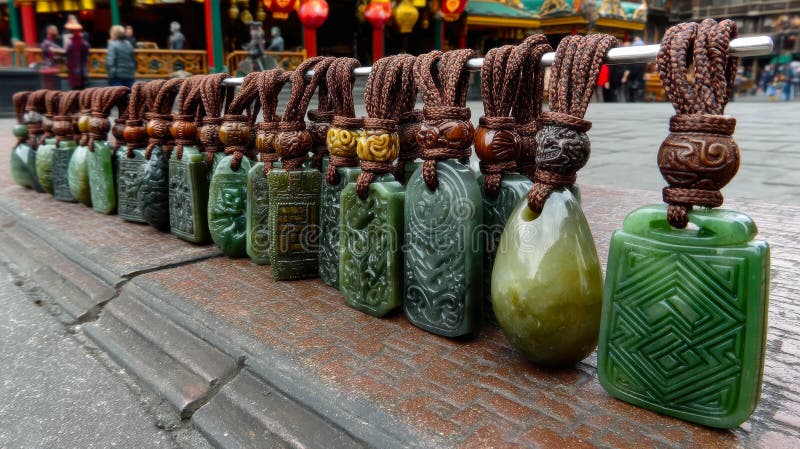
Hetian Jade Market.
Main Highlights: What You Absolutely Can’t Miss
The Hetian Jade Market is a vibrant tapestry of culture, artistry, and history, where the allure of jade captivates visitors from around the world. A visit to this market is not just about shopping; it’s an immersive experience that showcases the depth of jade’s significance in Chinese heritage. Here are the main highlights you absolutely can’t miss:
Explore the Rich History of Hetian Jade
Begin your journey by understanding the historical significance of Hetian jade, often regarded as China’s National Jade. With roots extending over 8,000 years, jade symbolizes purity, nobility, and virtue in Chinese culture. The market itself serves as a living museum, where you can see artisans carrying on centuries-old traditions of jade carving. Look for stalls that display jade pieces along with their stories—this backdrop enhances the beauty of every item you encounter.
Discover the Four Great Jades
While in the market, take a moment to familiarize yourself with the “Four Great Jades” of China: Hetian jade, Xiuyan jade, Dushan jade, and turquoise. Each variety has its unique characteristics and beauty. Hetian jade, often characterized by its “mutton-fat” white hue, is especially prized. As you explore, engage with booth owners and ask about the differences in color and texture—many are eager to share their knowledge!
Marvel at the Artisans at Work
One of the true highlights of the Hetian Jade Market is the opportunity to watch skilled artisans at work. Many stalls feature live demonstrations of jade carving, where you can witness the intricate process of transforming raw jade into exquisite pieces of art. Pay attention to the techniques used, as these craftsmen often utilize tools and methods passed down through generations, blending traditional artistry with modern influences.
Shop for Authentic Jade
As you stroll through the market, you’ll find a plethora of jade products ranging from raw stones to intricate jewelry, sculptures, and decorative items. Keep an eye out for authentic Hetian jade, recognized for its rich colors and unique textures. When shopping, don’t hesitate to ask vendors for information about the jade’s origin and quality; many are happy to provide insights that can help you make informed purchases.
Learn About Different Types of Hetian Jade
The market is an excellent place to learn about the various types of Hetian jade, such as Mountain Jade, Mountain Water Jade, and Desert Jade. Each type has distinct characteristics based on its geological origin, and discerning these differences can enhance your appreciation for the material. Look for pieces that showcase the unique qualities of these jade types—such as the smoothness of Mountain Water Jade or the rugged beauty of Desert Jade.
Indulge in Cultural Experiences
Beyond jade, the Hetian Jade Market is steeped in local culture. Take time to indulge in traditional Xinjiang cuisine at nearby food stalls, where you can sample everything from hand-pulled noodles to succulent lamb skewers. Immerse yourself in the sounds and sights of the market, as vendors call out to potential buyers and the aroma of spices fills the air, creating a sensory feast that complements your jade exploration.
Capture Unique Memories
Finally, don’t forget to document your journey! The stunning pieces of jade, the vibrant market atmosphere, and the artisans at work create perfect opportunities for photography. Capture the intricate details of the jade carvings and the dynamic interactions between buyers and sellers. These memories will serve as beautiful reminders of your time spent at the Hetian Jade Market.
Visiting the Hetian Jade Market is more than just a shopping trip; it’s a deep dive into the cultural heart of Xinjiang and a celebration of one of China’s most cherished treasures.
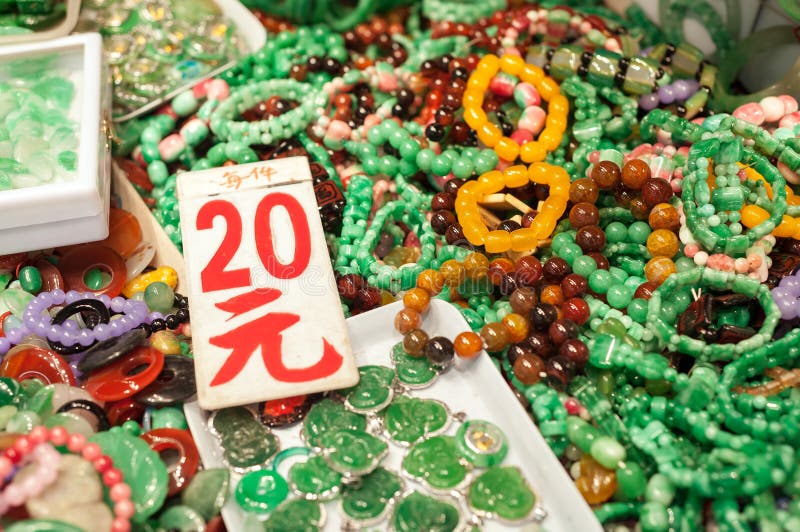
Hetian Jade Market.
Planning Your Visit: A Practical Guide
Visiting the Hetian Jade Market is a captivating experience that immerses you in the rich history and cultural significance of jade in Chinese society. As you prepare for your visit, here’s a practical guide to ensure you make the most of your journey to this unique market.
Getting There
Location: The Hetian Jade Market is located in Hotan City (also known as Hetian), which is in the Xinjiang Uyghur Autonomous Region of China. This market is renowned for its wide array of jade products and is a must-visit for enthusiasts and collectors alike.
Transportation:
– By Air: The nearest airport is Hotan Airport (HTN), which has domestic flights connecting to major cities like Urumqi and Kashgar. From the airport, you can take a taxi or arrange for a hotel pickup.
– By Train or Bus: If you’re coming from larger cities within Xinjiang, consider taking a train or long-distance bus to Hotan. The journey offers picturesque views of the region’s diverse landscapes.
When to Visit
The best time to visit the Hetian Jade Market is during the spring (April to June) and autumn (September to October) months when the weather is mild and pleasant. Summer can be quite hot, while winter may bring colder temperatures and snowfall.
Market Hours
The market typically operates daily from 9 AM to 6 PM. However, it’s advisable to arrive early to beat the crowds and have ample time to explore the stalls and shops.
What to Expect
-
Variety of Jade: You’ll find an extensive selection of Hetian jade in various forms—raw stones, carved sculptures, jewelry, and decorative items. Look for the famous “mutton-fat” white jade, known for its exquisite beauty and smooth texture.
-
Cultural Experience: Engage with local artisans and vendors who can provide insights into the jade-making process and the significance of jade in Chinese culture. Many sellers are happy to share stories about their crafts and the unique qualities of their jade.
-
Shopping Tips:
- Bargaining: Haggling is a common practice at the market, so don’t hesitate to negotiate prices. Start with a lower offer and gradually work your way up.
-
Authenticity: Ensure the jade you purchase is genuine. Look for reputable sellers, and consider asking for certificates of authenticity if available.
-
Nearby Attractions: After exploring the jade market, take some time to visit nearby attractions such as the Hotan Museum, where you can learn more about the region’s history and jade craftsmanship. Additionally, you might explore the local bazaars and try traditional Uyghur dishes at nearby restaurants.
Practical Considerations
- Language: While some vendors may speak basic English, it’s helpful to learn a few phrases in Mandarin or Uyghur to enhance your interactions.
- Cash: Bring cash, as not all vendors may accept credit cards. The local currency is the Chinese Yuan (CNY).
- Dress Comfortably: Wear comfortable shoes and clothing, as you’ll be walking around the market and exploring its various stalls.
Final Thoughts
A visit to the Hetian Jade Market is more than just a shopping trip; it’s a journey into the heart of a culture that has valued jade for thousands of years. From its historical significance to the artistry on display, you’ll leave with not only beautiful souvenirs but also a deeper appreciation for this treasured stone. Happy travels!
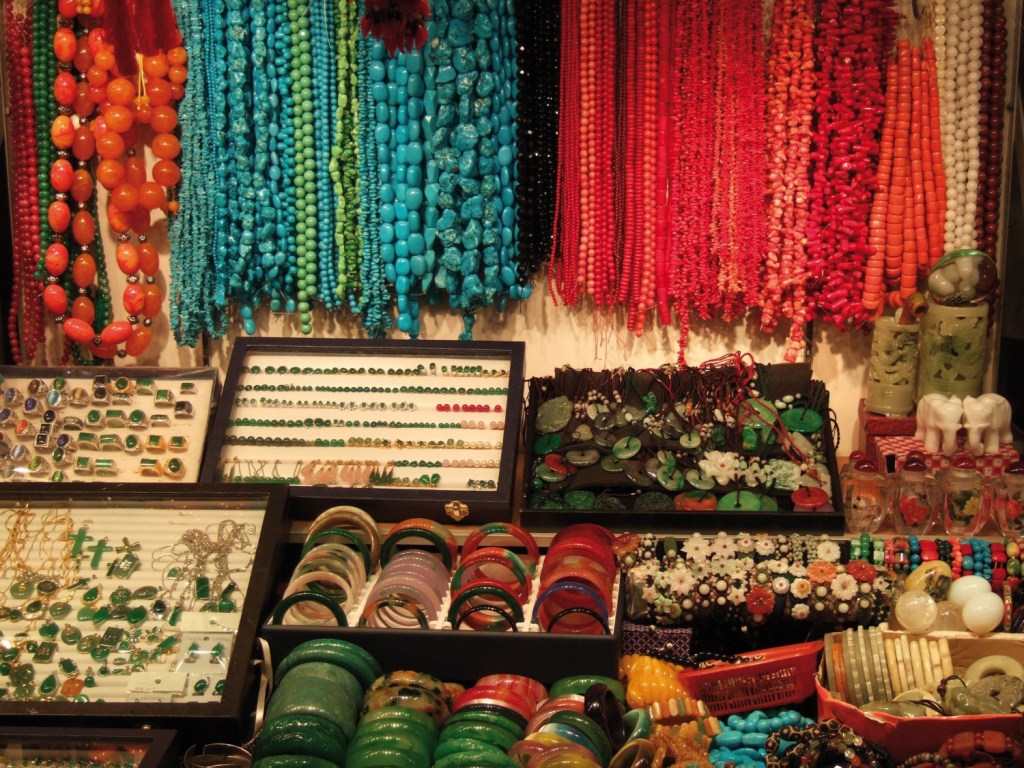
Hetian Jade Market.
Tickets: Prices, Booking, and Tips
When planning your visit to the renowned Hetian Jade Market (和田玉石市场), understanding the ticketing process, prices, and some insider tips can enhance your experience. Here’s what you need to know:
Admission and Ticket Pricing
Visiting the Hetian Jade Market is generally free of charge, making it an accessible destination for all travelers. However, while entry is complimentary, it’s wise to budget for potential purchases, as the market offers a wide range of jade products, from intricate carvings to jewelry.
Booking Tips
-
Timing Your Visit: The market is busiest during weekends and public holidays. To enjoy a more relaxed experience, consider visiting on a weekday, ideally in the morning when the stalls are freshly stocked.
-
Local Guides: If you’re new to jade or want to ensure you’re getting authentic Hetian jade, consider hiring a local guide. They can provide valuable insights into the types of jade, pricing, and craftsmanship, helping you make informed decisions.
-
Bargaining: Haggling is expected in the market. Start by offering a price that is lower than what you’re willing to pay and negotiate from there. This not only makes for a fun experience but can also lead to substantial savings.
Payment Methods
Most vendors accept cash, but it’s becoming increasingly common for them to accept mobile payments like WeChat Pay and Alipay. Make sure to download one of these apps if you plan to shop extensively.
Essential Tips for Shoppers
-
Research Before You Go: Familiarize yourself with the different types of Hetian jade and their characteristics. Knowing what to look for can prevent you from making uninformed purchases.
-
Inspect the Jade: When browsing, examine the jade pieces closely for color, clarity, and craftsmanship. Authentic Hetian jade should feel cool to the touch and have a smooth surface.
-
Ask for Certification: If you’re considering a significant investment, request a certification of authenticity. Reputable sellers should be able to provide documentation that verifies the quality and origin of the jade.
-
Stay Hydrated and Rested: The market can be overwhelming with its vast selection and busy atmosphere. Take breaks and keep water handy to stay energized throughout your visit.
By keeping these details in mind, your trip to the Hetian Jade Market will not only be enjoyable but also rewarding, as you explore the beauty and cultural significance of this treasured stone. Happy jade hunting!
How to Get There: A Complete Transportation Guide
To reach the renowned Hetian Jade Market (和田玉石市场) in the Xinjiang Uygur Autonomous Region of China, international travelers have several transportation options, depending on their starting point. This guide breaks down the best ways to access this vibrant market, known for its exquisite jade pieces, rich history, and cultural significance.
Arriving in China
Major International Airports
Your journey to the Hetian Jade Market will likely begin at one of China’s major international airports. The most common entry points are:
- Beijing Capital International Airport (PEK)
- Shanghai Pudong International Airport (PVG)
- Xi’an Xianyang International Airport (XIY)
From any of these hubs, you can catch a domestic flight to Kashgar (KHG), which is the nearest major airport to Hetian.
Domestic Travel to Hetian
By Air
-
Fly to Kashgar: Direct flights to Kashgar are available from several major cities, including Beijing, Shanghai, and Urumqi (the capital of Xinjiang). The flight time from Beijing to Kashgar is approximately 4 to 5 hours.
-
Continue to Hetian: Once in Kashgar, you can take a domestic flight to Hetian Airport (HTN). The flight takes about 1 hour and operates multiple times a day. Alternatively, if flights are unavailable, you can opt for a bus or taxi, which will take around 4 to 5 hours.
By Train
For those who enjoy scenic views, traveling by train is an excellent choice:
– Train to Hetian: From Urumqi, you can take a train to Hetian. The journey typically takes around 24 hours, depending on the service and schedule. Be sure to check the latest train schedules and book tickets in advance, especially during peak travel seasons.
By Bus
If you’re traveling from Kashgar to Hetian:
– Long-Distance Buses: There are frequent long-distance buses that run between Kashgar and Hetian. The bus journey takes approximately 5 to 7 hours, offering a comfortable and cost-effective way to reach your destination. Buses depart from the Kashgar Long-Distance Bus Station.
Local Transportation in Hetian
Once you arrive in Hetian, getting to the jade market is simple:
– Taxi: Taxis are readily available at the airport and bus station. A taxi ride to the jade market should cost around 10 to 20 RMB (approximately $1.50 to $3 USD).
- Public Transport: Local buses also connect various parts of the city to the jade market. Check with locals or your hotel for the best routes to take.
Tips for Travelers
-
Language: English is not widely spoken in Hetian, so it’s helpful to have basic Mandarin phrases or a translation app ready.
-
Currency: The local currency is the Chinese Yuan (CNY). Ensure you have cash handy, as not all vendors accept credit cards.
-
Best Time to Visit: The jade market is busiest during the summer months (June to August), when travelers flock to the region. Visiting during the shoulder seasons (April to May and September to October) can provide a more relaxed experience.
With this comprehensive transportation guide, you’ll be well on your way to exploring the captivating Hetian Jade Market and the rich culture surrounding one of China’s most cherished gemstones. Safe travels!

Hetian Jade Market.
Local Cuisine and Accommodation Nearby
When visiting the Hetian Jade Market, immersing yourself in the local culture goes beyond just the exquisite jade on display. The region offers a delightful array of culinary experiences and cozy accommodations that will enhance your journey.
Culinary Delights
-
Hand-Pulled Noodles (刀削面)
A must-try for any visitor, these chewy, hand-pulled noodles are often served in a flavorful broth with fresh vegetables and tender meat. Look for local eateries where you can watch chefs skillfully prepare this beloved dish. -
Lamb Skewers (羊肉串)
Enjoy the flavors of Xinjiang with succulent lamb skewers that are marinated with a blend of spices and grilled to perfection. Street vendors around the market often serve these as a quick and tasty snack. -
Naan Bread (馕)
This fluffy, round flatbread is a staple in local cuisine. Whether enjoyed on its own or paired with stews and grilled meats, naan is a comforting side that complements the vibrant flavors of the region. -
Dumplings (饺子)
Taste the homemade dumplings filled with various ingredients like pork, beef, or vegetables. These delicious pockets of goodness are often steamed or boiled and served with dipping sauces. -
Fruits and Nuts
Xinjiang is famous for its high-quality dried fruits and nuts. Be sure to sample local apricots, raisins, and walnuts, which make for delightful snacks as you explore the market.
Comfortable Stays
-
Hetian Hotel (和田大酒店)
Located in the heart of the city, this hotel offers comfortable accommodations with modern amenities. Guests can enjoy stunning views of the surrounding mountains and convenient access to the Hetian Jade Market. -
Khotan Grand Hotel (和田大饭店)
This hotel combines traditional architecture with contemporary comfort. Its on-site restaurant serves a variety of local dishes, making it an excellent choice for food lovers. -
Xinjiang Yutian Hotel (新疆玉田酒店)
A great option for travelers seeking a more budget-friendly stay, this hotel provides clean and simple rooms. It’s conveniently situated near shopping and dining options, perfect for those wanting to explore the local scene. -
Homestays
For a more authentic experience, consider booking a homestay with local families. This option not only provides a cozy atmosphere but also offers insights into daily life and local traditions. -
Guesthouses
There are several charming guesthouses within walking distance of the market. Many feature traditional decor and offer a warm, welcoming atmosphere, making them ideal for travelers looking to connect with the local culture.
Exploring the Hetian Jade Market is a feast for the senses, and with these culinary and accommodation recommendations, your visit will be both enriching and memorable. Enjoy the unique flavors and warm hospitality that this enchanting region has to offer!
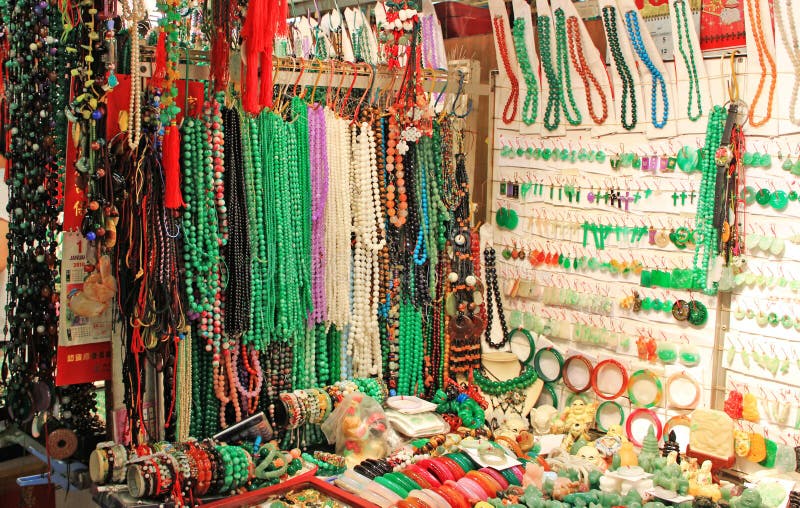
Hetian Jade Market.
Frequently Asked Questions
Frequently Asked Questions for Travelers to Hetian Jade Market
1. What is Hetian Jade Market and where is it located?
Hetian Jade Market, also known as 和田玉石市场, is a vibrant marketplace located in Hetian (Hotan), Xinjiang Province, China. This market is renowned for its exceptional selection of Hetian jade, a revered stone with deep cultural significance in Chinese history.
2. What types of jade can I find at Hetian Jade Market?
At the market, visitors can find various types of Hetian jade, including mutton-fat white jade, dark jade, black jade, and even rare colored varieties like yellow and cyan jade. Each type has its unique characteristics and value, making it a paradise for jade enthusiasts and collectors.
3. How do I know if a piece of jade is genuine?
To ensure you are purchasing genuine Hetian jade, look for a few key characteristics: the stone should have a smooth, waxy texture, and its color should be consistent throughout. Familiarize yourself with the different types of jade and ask vendors for certificates of authenticity. If possible, consult a knowledgeable local or jade expert.
4. Are prices at Hetian Jade Market negotiable?
Yes, bargaining is a common practice in Chinese markets, including Hetian Jade Market. Vendors often expect customers to negotiate, so don’t hesitate to discuss prices. Just remember to be respectful and fair during the process.
5. What is the best time to visit Hetian Jade Market?
The market is busiest during the morning hours, especially on weekends. To avoid large crowds, consider visiting on weekdays or later in the afternoon. The weather in Xinjiang can also affect your visit, so check the forecast to ensure a comfortable experience.
6. Can I find jade jewelry and carvings at the market?
Absolutely! Hetian Jade Market offers a wide range of jade products, including exquisite jewelry, intricate carvings, and decorative items. Whether you’re looking for a statement piece or a souvenir, the market has something for everyone.
7. Are there any cultural customs I should be aware of while shopping?
Yes, it’s essential to be respectful of local customs. When bargaining, maintain a friendly demeanor and avoid being overly aggressive. Additionally, it’s customary to greet vendors politely and thank them for their assistance, regardless of the outcome of the purchase.
8. Is it safe to travel to the Hetian Jade Market?
Hetian is generally considered safe for tourists, but like any travel destination, it’s wise to stay aware of your surroundings. Keep your belongings secure and avoid isolated areas, especially at night. Familiarize yourself with local laws and customs to ensure a smooth and enjoyable visit.
Final Thoughts on Your Trip
As you conclude your journey through the Hetian Jade Market, it’s essential to carry with you the rich tapestry of history, artistry, and cultural significance that jade embodies in the heart of Xinjiang. This market isn’t just a shopping destination; it’s a vibrant testament to an ancient tradition that has flourished for thousands of years. Each piece of jade tells a story, reflecting the skilled craftsmanship of artisans who use age-old techniques to transform raw stone into objects of beauty and meaning.
As you wander through the bustling stalls, take a moment to appreciate the intricacies of the various jade types, from the revered mutton-fat white jade to the unique dark and black varieties. Consider how this stone has transcended mere ornamentation, becoming a symbol of virtue, harmony, and resilience throughout Chinese history.
Whether you are seeking a unique souvenir, a meaningful gift, or simply a deeper understanding of Chinese culture, the Hetian Jade Market offers an unforgettable experience. Embrace the serenity of the jade, the warmth of the vendors, and the vibrant atmosphere of this market, and let the spirit of Hetian jade accompany you long after you leave. As you return home, may you carry not just a piece of jade, but also a piece of its profound legacy, connecting you to the timeless beauty of this remarkable stone and the rich heritage of the people who cherish it. Safe travels and happy discoveries!